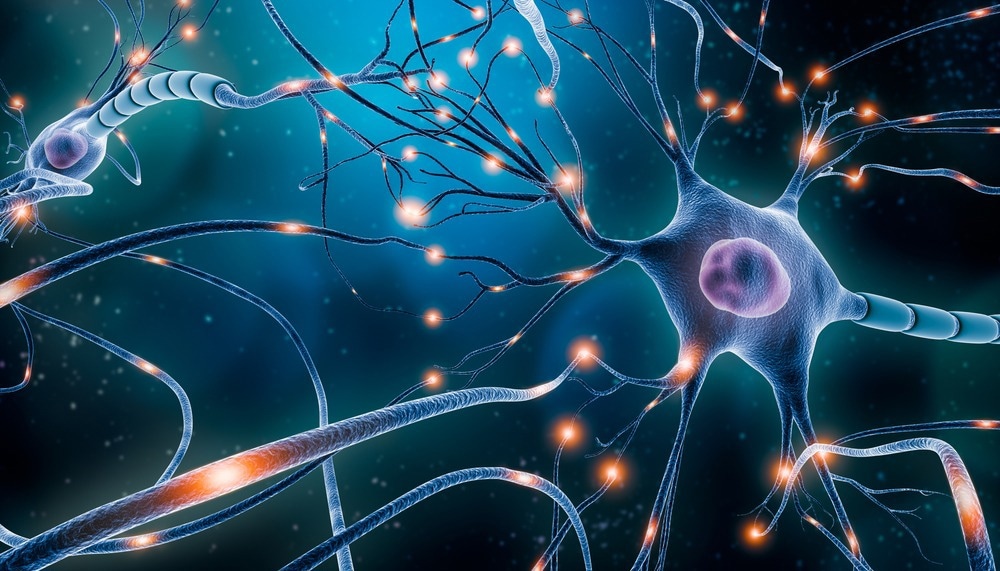In a recent study published in Nature Neuroscience, a group of researchers explored how the cerebellum directly affects dopamine release in the substantia nigra compacta (SNc).
 Study: The cerebellum directly modulates the substantia nigra dopaminergic activity. Image Credit: MattL_Images/Shutterstock.com
Study: The cerebellum directly modulates the substantia nigra dopaminergic activity. Image Credit: MattL_Images/Shutterstock.com
Background
While the cerebellum's role in motor control is established, its impact on dopaminergic neurons in the SNc, crucial for movement regulation, remains less understood. This gap in knowledge is significant, considering dopaminergic dysfunction is central to Parkinson's disease.
Most research focused on the cerebellum's direct motor outputs, overlooking its potential modulation of midbrain dopaminergic systems. Further research is needed to uncover the role of dopaminergic regulation and its implications for treating movement disorders like Parkinson's disease.
About the study
The researchers utilized a combination of optogenetics, electrophysiology, and anatomical tracing to explore the nature of these neural pathways and their functional implications. The optogenetic approach was pivotal in manipulating the activity of specific neurons. The team genetically modified neurons in the deep cerebellar nuclei (DCN) to express channelrhodopsin (ChR2), allowing these neurons to be activated with light. This method enabled precise control over cerebellar inputs to the SNc, facilitating the observation of immediate neuronal responses.
Electrophysiological techniques, including whole-cell voltage-clamp recordings, were employed to measure the electrical properties of the neurons. This allowed the researchers to observe how cerebellar stimulation affected the activity of both dopaminergic and non-dopaminergic neurons in the SNc. The responses were recorded in terms of changes in firing rates, synaptic currents, and other electrophysiological parameters.
Anatomical tracing was another crucial aspect of the methodology. This involved the use of viral-mediated retrograde and anterograde tracing experiments to map the connections between the cerebellum and SNc. The tracing methods helped identify the origin and destination of neural projections, providing a clear picture of the cerebellar influence on the SNc.
Together, these methods formed a comprehensive approach to understanding the direct and rapid influence of the cerebellum on the dopaminergic system. The combination of optogenetics, electrophysiology, and anatomical tracing provided a multi-dimensional view of the neural interactions, leading to significant findings in the field of neuroscience.
Study results
The present study revealed groundbreaking insights into the interactions between the cerebellum and the SNc in mice. It was discovered that the cerebellum directly modulates SNc neurons through monosynaptic glutamatergic synapses, impacting both dopaminergic and non-dopaminergic neurons. This interaction was found to be critical for movement initiation and reward processing, as well as modulating striatal dopamine levels.
Key findings included the observation that cerebellar stimulation led to immediate responses in SNc neurons, which were classified into two types: excitation or excitation, followed by a pause. The majority of SNc neurons responded to this stimulation, indicating a robust connection between these two brain regions. Additionally, stimulation of the cerebellar-SNc pathways resulted in increased dopamine release in the striatum, further highlighting the significance of this connection in the regulation of motor functions and reward systems.
In vitro experiments using whole-cell voltage-clamp recordings further substantiated these findings. The study found that both TH-positive (dopaminergic) and TH-negative neurons in the SNc responded to cerebellar stimulation, suggesting that the cerebellar influence on the SNc is not cell-type specific.
Furthermore, the responses to cerebellar stimulation were mediated by Alpha-amino-3-hydroxy-5-methyl-4-isoxazolepropionic acid (AMPA) and N-methyl-D-aspartate (NMDA) receptors, indicating that the neurotransmitter glutamate plays a crucial role in this pathway.
The anatomical basis for these findings was also explored through a series of tracing experiments. These experiments confirmed the presence of direct monosynaptic projections from all three DCN to the SNc. The projections were found to be bilateral and targeted both dopaminergic and non-dopaminergic neurons in the SNc. This anatomical arrangement reinforces the functional observations of cerebellar influence on the SNc.
The study significantly advances our understanding of the cerebellum's role in motor control and reward processing. It challenges the traditional view of the cerebellum as merely a coordinator of movement, positioning it as a direct influencer of dopaminergic activity in the basal ganglia. These findings have broad implications for our understanding of neurological disorders like Parkinson's disease and could pave the way for new therapeutic approaches.
Conclusions
This study highlights the cerebellum's rapid modulation of SNc neurons via an excitatory monosynaptic pathway, a significant addition to our understanding of motor and non-motor behaviors. The cerebellum, with its unique architecture, integrates extensive sensory and cortical information, predicting and coordinating muscle contractions for complex motor tasks.
This ability allows the cerebellum to provide time-sensitive information to the basal ganglia, which is crucial for movement initiation and vigor. The research also points to the cerebellum's potential role in Parkinson's disease and reward processing, underlining its broader impact on brain function beyond traditional motor coordination tasks.